Culebra, The Remote Island That Took Solar Energy Into Its Own Hands
Culebra, The Remote Island That Took Solar Energy Into Its Own Hands
When hurricanes Irma and Maria struck Puerto Rico in September 2017, the island municipality of Culebra was left in the dark—literally. Located 17 miles off Puerto Rico’s eastern coast, Culebra is one of the largest islands in the country’s archipelago. Still, with power lines down and generators overwhelmed, it took more than a year for the island to reconnect fully to the national grid.
For longtime residents like Lisa Olson, the memory is still vivid.
"Power outages have always been a part of life here in Puerto Rico, even long before Hurricane Maria. Sometimes the power would go out for just an hour or two, but other times it would be days. After Maria hit, things got really bad—the grid was in ruins, and blackouts were constant and long. Honestly, it was exhausting. The system just couldn’t keep up. And even now, the grid is still fragile."
A Community Left Vulnerable
“It felt like the island went dark—literally and emotionally.”
The devastation Culebra experienced was part of a broader humanitarian crisis across Puerto Rico. Hurricane Maria is now estimated to have caused approximately 3000 deaths, according to multiple studies and investigations.
“After Irma and Maria hit in 2017, everything changed overnight. It felt like the island went dark—literally and emotionally. The winds were deafening, and when they finally stopped, the silence that followed was just as heavy. Trees were down, houses damaged, boats smashed... we were completely cut off. No power, no water, no phone service. We stood in line for hours just to get gas or food. Everyone was trying to survive,” Olson recalled.
Verónica Meléndez Gonzalez, a retired police officer and community leader, remembered how Culebra’s isolation amplified the crisis.
“We were without light for a very long time, because our electricity comes from the mainland through underwater cables to the island of Vieques, and from the island of Vieques to the island of Culebra.”
Culebra, Puerto Rico. Photo courtesy of EDF.
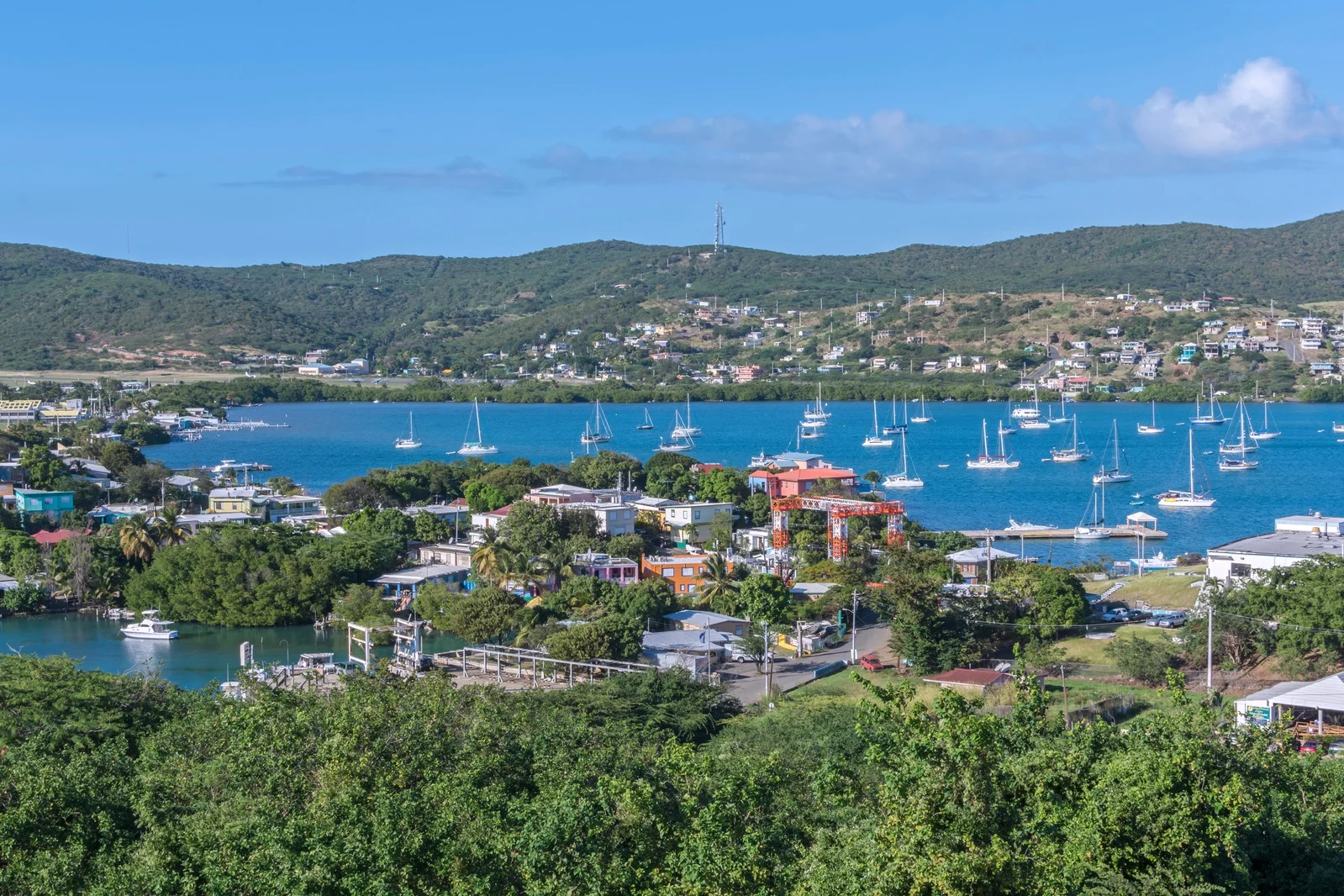
Nelson Meléndez, a retired professor who has lived permanently in Culebra for the past 11 years, also remembered that period clearly, “The municipality had a generator, so we had electricity at night—from 7 at night to 7 in the morning.”
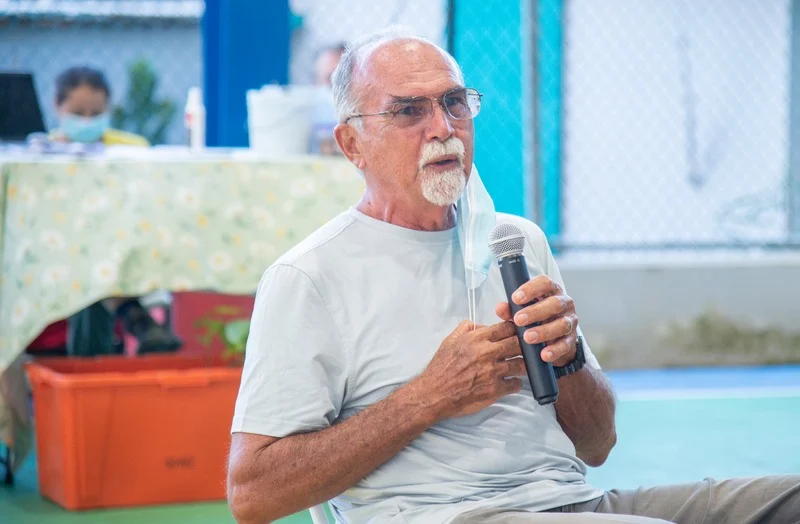
Nelson Meléndez. Photo courtesy EDF.
“The entire island was provided with electricity, yes, but the noise of where they placed the generators, the noise they produced, the pollution that was produced with the diesel, it causes an effect on a small community,” Meléndez Gonzalez said.
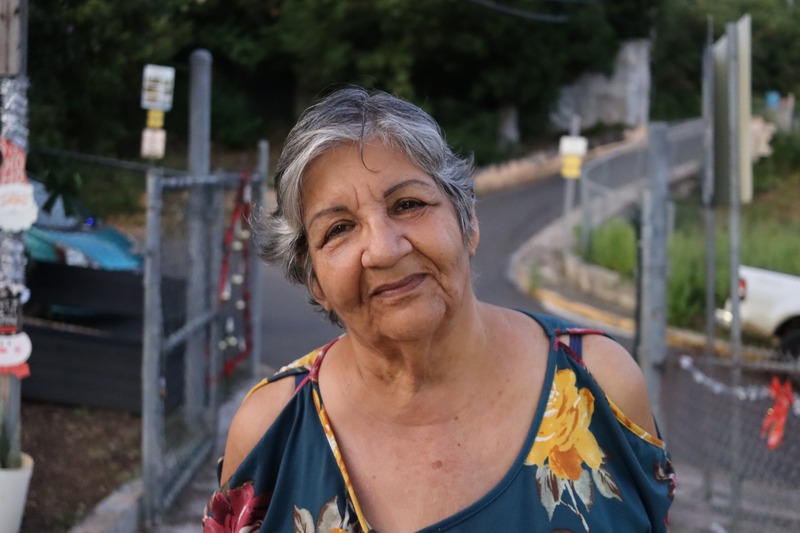
Veronica Meléndez Gonzalez. Photo courtesy EDF.
In late 2017, the U.S. Army Corps of Engineers and the Federal Emergency Management Agency (FEMA) scheduled two large generators to supplement Culebra’s lone 1,800-kilowatt generator. But generators brought their own challenges.
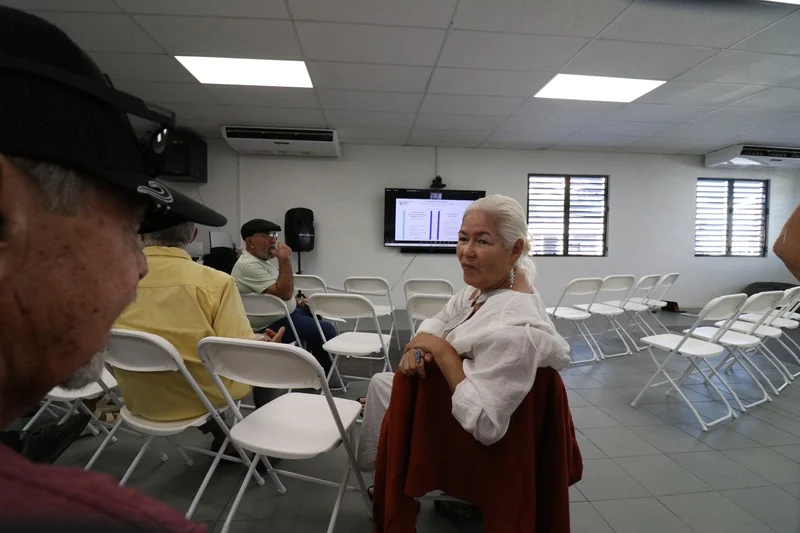
Lisa Marie Olson. Photo courtesy EDF.
“Food would spoil in the fridge when the power went out, which was frustrating and wasteful, especially when money's tight. Without fans or A/C, the mosquitoes would come in full force, and that’s more than just annoying—it’s a health risk with diseases like dengue or Zika.
For folks who rely on medical equipment, power loss can be terrifying. And then there’s the water; when the pumps stop, so does the water. The outages didn’t just make life inconvenient—they made it unsafe and unstable. And with electricity costs so high already, it just added to the stress,” said Olson.
Facing prolonged outages, costly electricity bills, and increasing uncertainty, residents of Culebra knew they could no longer rely on an unstable, centralized system.
That realization sparked a collective movement toward energy independence—and a groundbreaking partnership led by the Environmental Defense Fund (EDF), with funding from Fundación Colibrí Puerto Rico and support from locally based organizations Mujeres de Islas, Fundación de Culebra, and the Foundation for a Better Puerto Rico. The result was a locally-driven solar project that installed hybrid rooftop systems on 45 homes, prioritizing the elderly, families with children, and residents with medical needs.
Residents of Culebra learning about solar energy. Photo courtesy EDF.
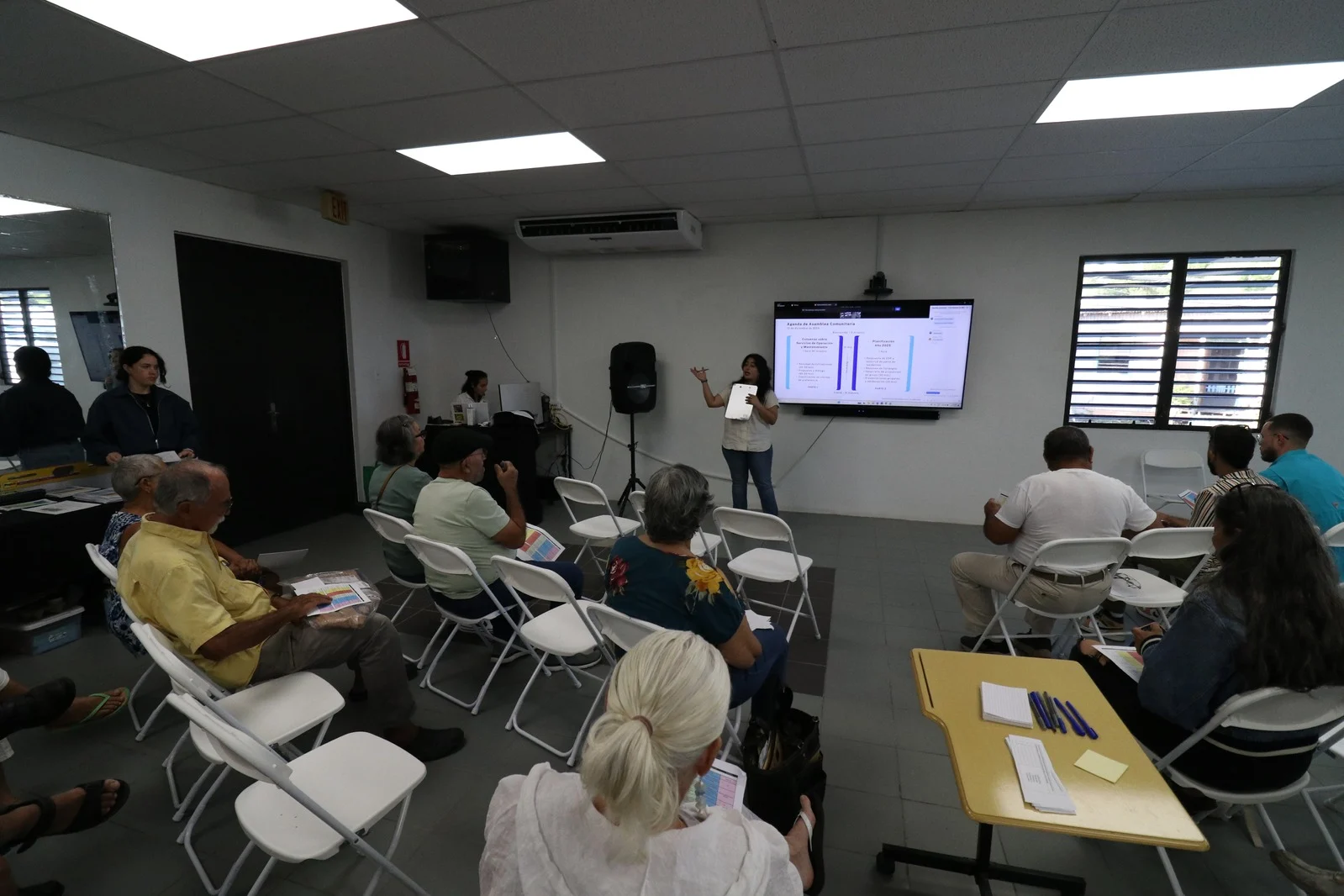
Building a New System from the Ground Up
The initial technical assessment recommended building a renewable virtual power plant—where clustered homes and businesses would generate solar energy and feed it into the local grid. But early consultations with Culebra residents revealed a challenge: the most vulnerable households were spread across the island, not clustered together. In response, the project shifted to a more adaptable model—installing rooftop solar and battery storage systems in individual homes scattered throughout the community.
“I first heard about it from Luz Cantwell at Fundación de Culebra,” said Olson. “She invited me—and some of my high school students—to meet with the folks from EDF. We talked about our experiences during the hurricanes, the challenges we were still facing, and how solar energy could be part of the solution.”
Meléndez Gonzalez, working with Mujeres de Islas, helped organize community meetings and encourage participation, “It was something that was very new to us… But it provided a way for us to continue to have electricity, even if the electricity went out. And there’s so much sun in Puerto Rico—why can’t we make it?”
Meléndez and his wife joined the project because, as he put it, “We wanted to be off-grid as much as we could and to have resiliency and not to be affected by the constant breakdowns of the electrical system in the island.”
Residents contribute to discussions about the energy transition. Photo courtesy EDF.
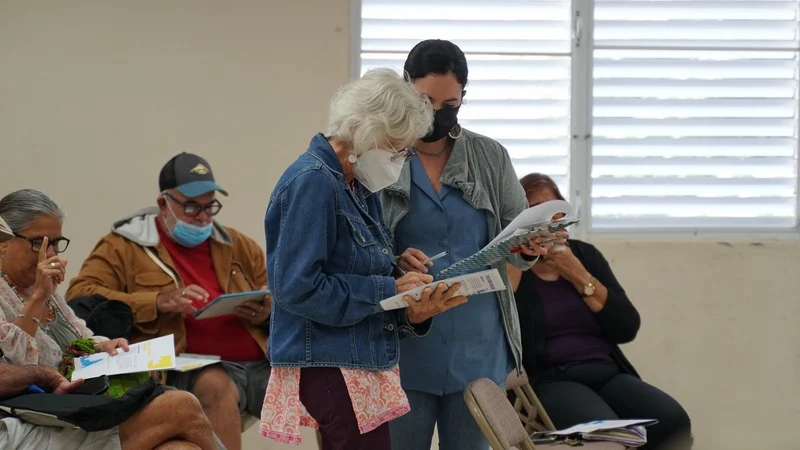
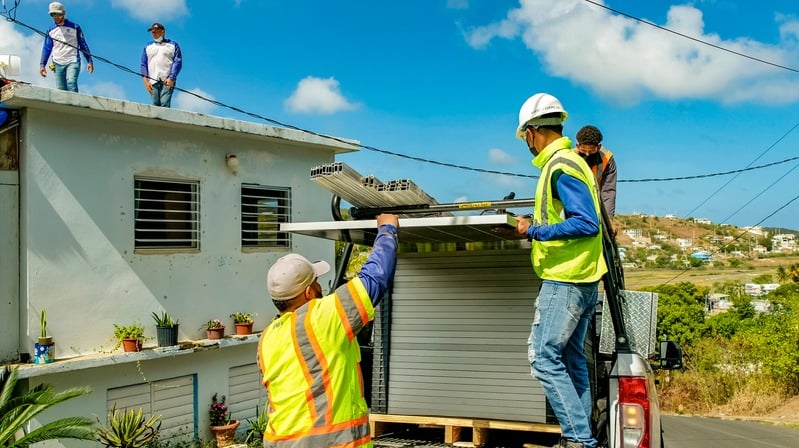
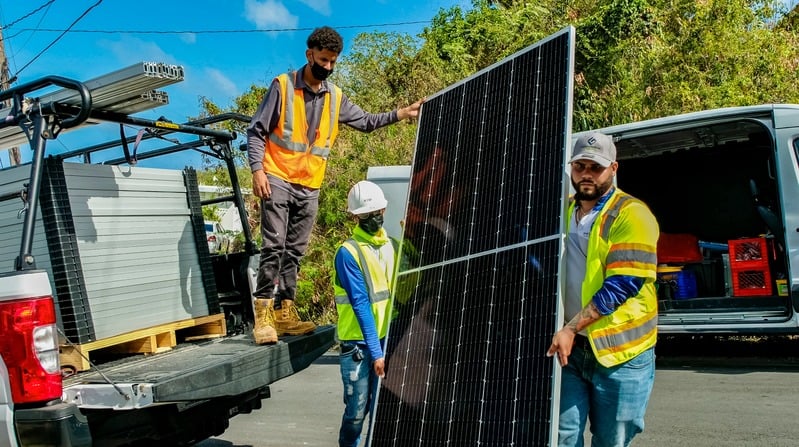
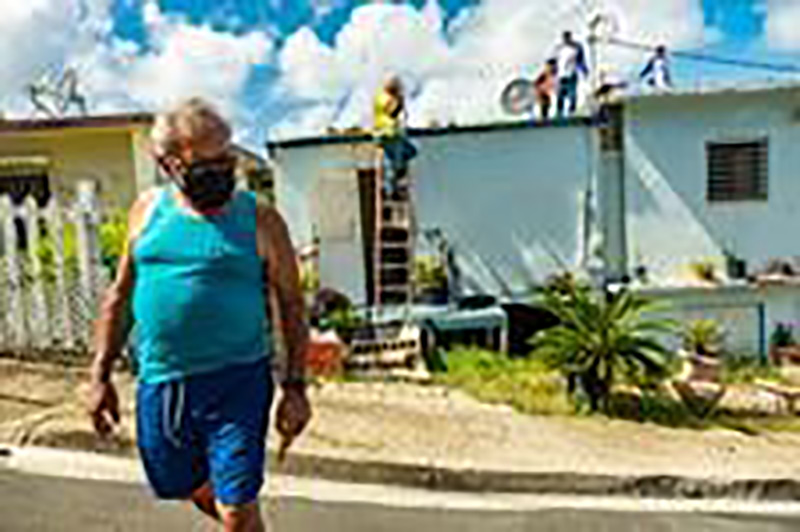
Life After Solar: Stability, Security, Dignity
For Olson, the biggest change has been mental and emotional relief. “Peace of mind, without a doubt. I no longer panic every time the lights flicker or a storm rolls in. I know I’ll still have power for the essentials: the fridge, the fans, the lights. It’s such a relief. I feel more secure, more independent, and like I’m no longer at the mercy of a failing grid.”
She also noticed a difference in her finances. “Our electric bills used to be painfully high, and even then, the service was unreliable. Now, with solar power, I’ve seen a noticeable drop in my monthly expenses, which makes it easier to budget and breathe a little easier… It’s not just about convenience—it’s about dignity, stability, and a better quality of life.”
For Meléndez Gonzalez, the system isn’t just about self-sufficiency—it’s about solidarity. “To me it's important because if I have electricity, I can provide to others. There are people here that are on machines for respiratory conditions and I say, come over. We help each other. So it's a way of being resilient for the whole community.”
Solar panel installation process on the home of Roberto Rexach. Photos courtesy EDF.
Overcoming Island-Specific Challenges
The FEMA Mitigation Assessment Team concluded that grid failures across Puerto Rico, particularly in isolated areas like Culebra, highlighted the need for resilient, distributed energy systems.
Accessible only by an unreliable ferry or plane, their distance from the mainland makes things more difficult to manage. “When repairs come in, it could be a little bit more expensive because they have to come in by boat,” Meléndez Gonzalez explained.
Installing and maintaining the systems wasn’t always easy.
As Meléndez explained, “It took a while because the company that installed the systems, they don't live here, so they have to make reservations on the ferry system and come over, and then the manufacturers of the equipment, they needed to have assurance that something was in fact broken before they could get the warranty into place. So it took a while going back and forth.”
Nelson Meléndez inspects the solar panel installation on the roof of his home. Photo courtesy EDF.
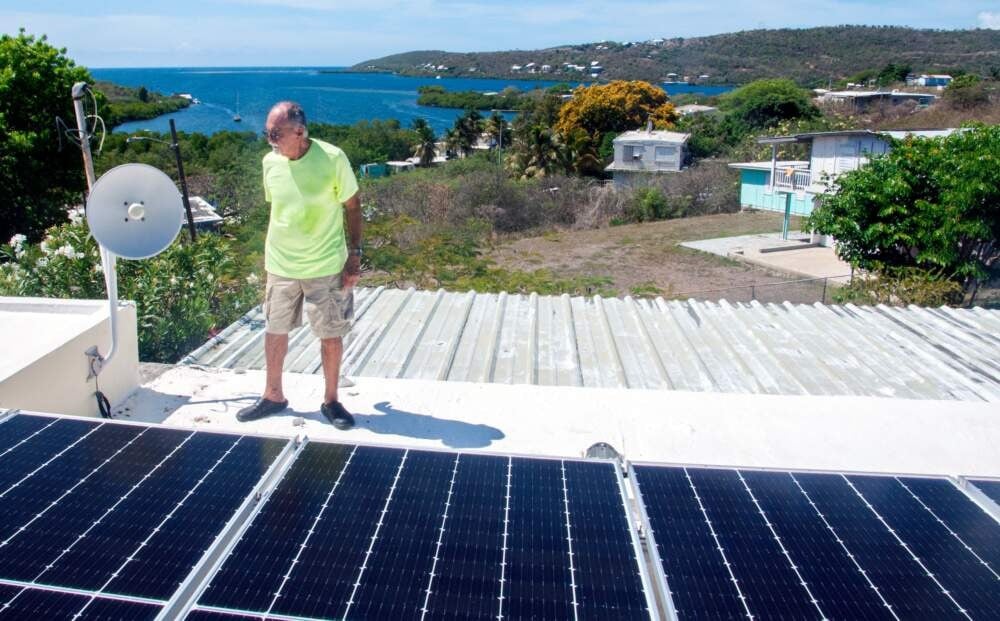
He was one of five residents whose systems initially failed due to faulty parts. It took months and multiple visits for replacements. But the residents didn’t sit back—they organized.
“We’ve been having regular meetings, the whole group… there are some people in the group who have physical limitations, and some of us have volunteered to clean their panels because it's impossible for them to get on the roof. We had to learn on our own how to manage it.”
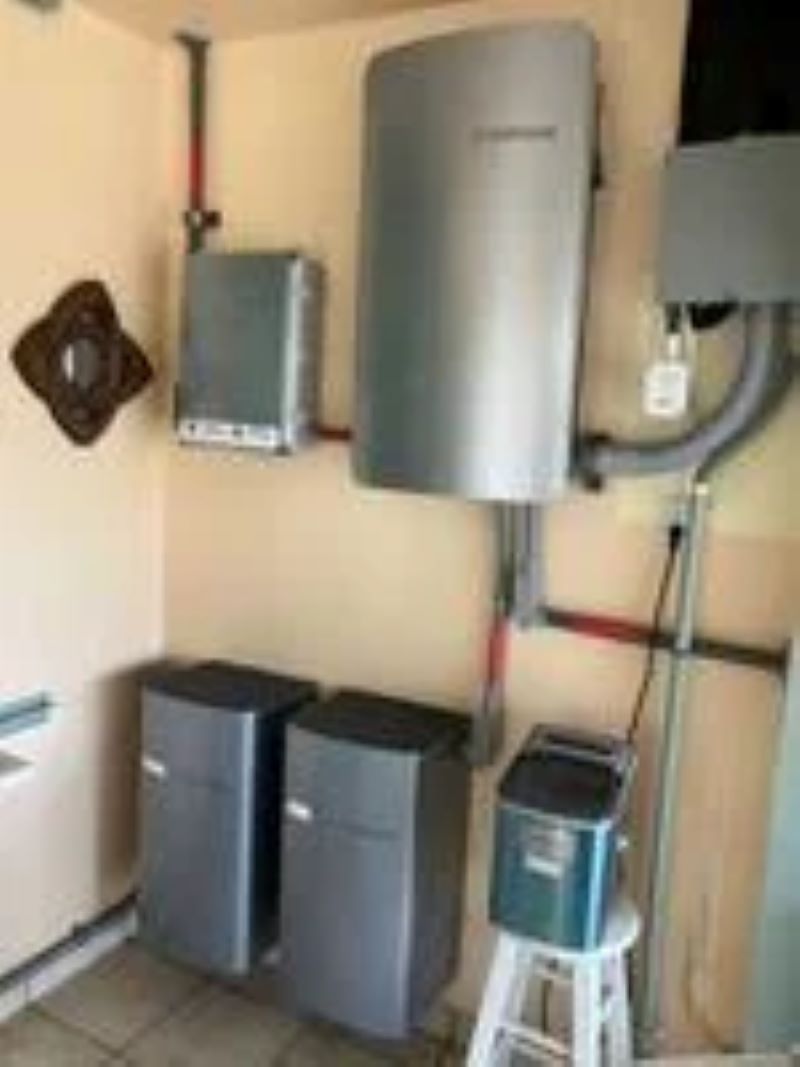
Components of the internal system installed by Enphase. Photo courtesy Nelson Meléndez.
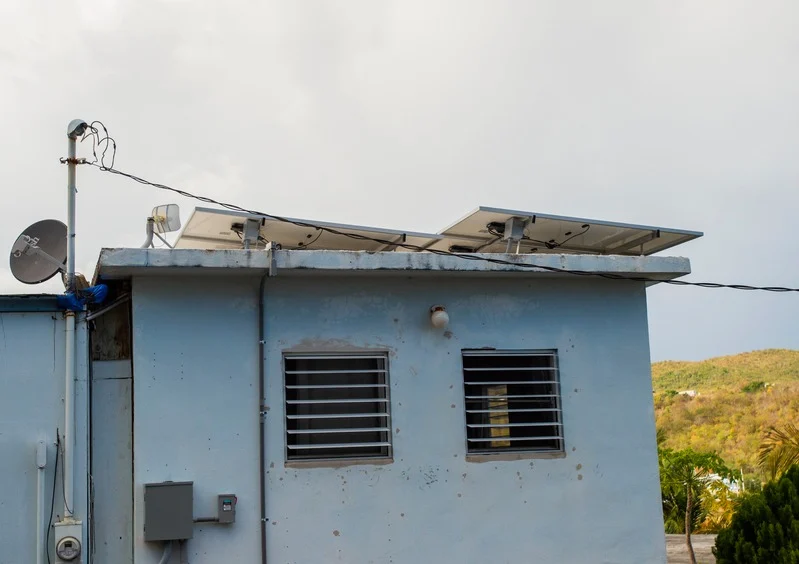
Panels were installed based on the electrical needs of the inhabitants. Photo courtesy EDF.
One resident has already been certified by Enphase, the solar equipment manufacturer, to do troubleshooting of the system. Meléndez hopes to follow.
“I’m thinking about taking one of those courses… so that I can be another resource for the community.”
Expanding the Vision
“The last count we had… it was 138 homes [with solar], because people went independently and bought the system themselves.”
After EDF launched the pilot, more residents, including Meléndez’s own son-in-law, became interested in solar and its benefits. Some were able to install systems on their own, mainly second-home owners with the money to do so. Meléndez Gonzalez noted, “The last count we had… it was 138 homes [with solar], because people went independently and bought the system themselves.”
Puerto Rico’s Renewable Energy Public Policy Act (Law 17-2019) sets an ambitious goal: 100% renewable energy by 2050—a vision that grassroots efforts in Culebra are helping realize.
Still, even with Puerto Rico’s ambitious goals for renewable energy, the path forward isn’t easy. The policies and support systems needed to make solar widely accessible, especially for low-income communities, just aren’t fully in place yet.
Right now, most solar programs for families in need are led by nonprofits on the ground. These groups are doing incredible work, but they can’t do it alone. That’s why EDF continues to push for stronger federal and state policies that make clean energy easier to access.
Community members attend a briefing session with staff from EDF and the solar installation company, Genesis Solar. Photo courtesy EDF.
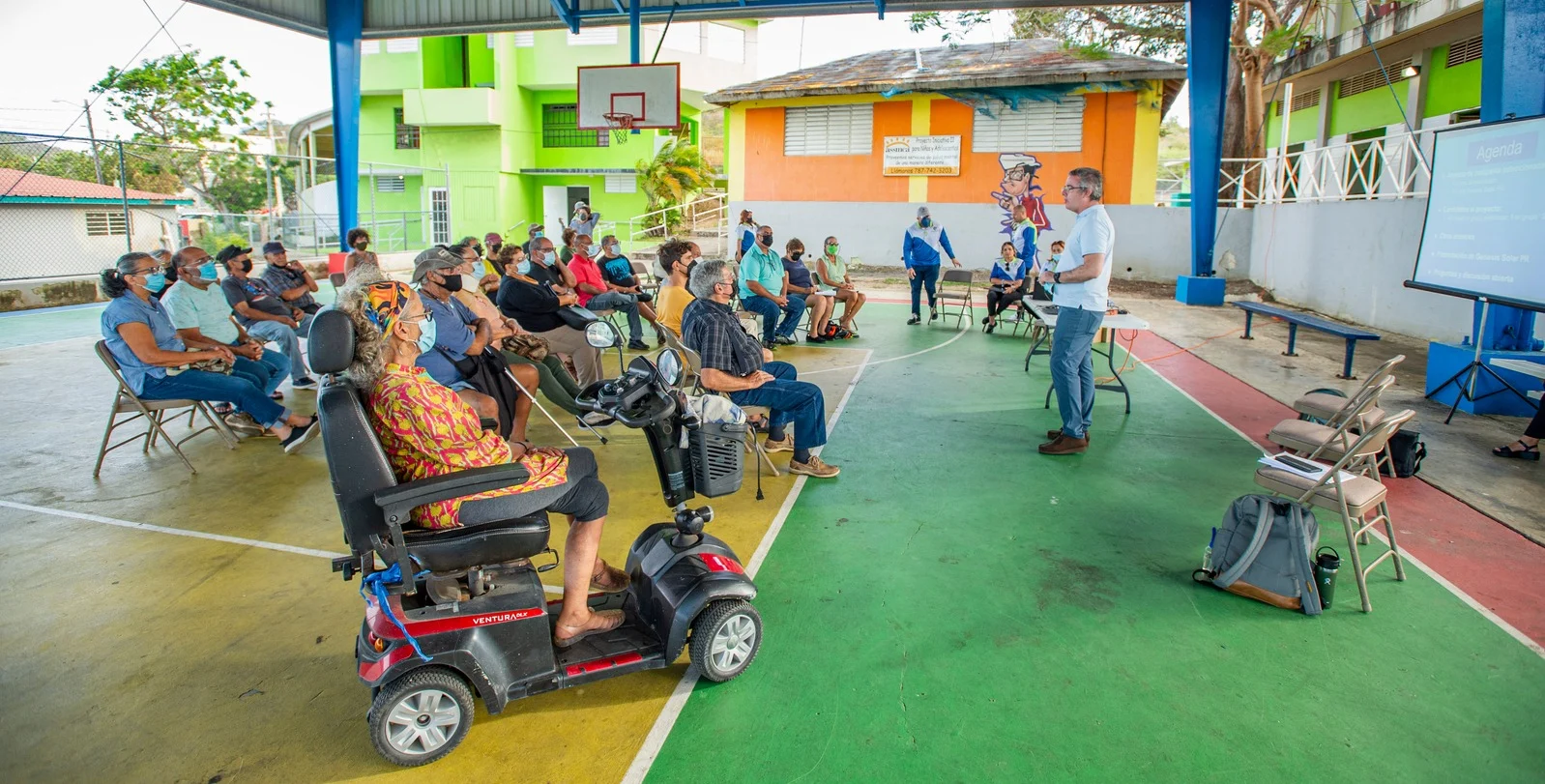
A Blueprint for Island Resilience
Culebra’s solar project is more than a success story—it’s a model for remote communities across the world. Meléndez Gonzalez summed it up, “It's lovely that the community has found a solution and not just the community, but businesses are also adopting it because it means that you're on the path to becoming self-sustainable.”
“The project has given us more than just power; it’s given us a sense of control over our future.
People are talking more about renewable energy and what’s possible, even in a small, remote place like this,” Olson said. “It’s given us hope.”
And they’ve done it not by waiting on help—but by working together, one rooftop at a time.
Photo of Culebra, Puerto Rico by Wenhao Ruan on Unsplash.
